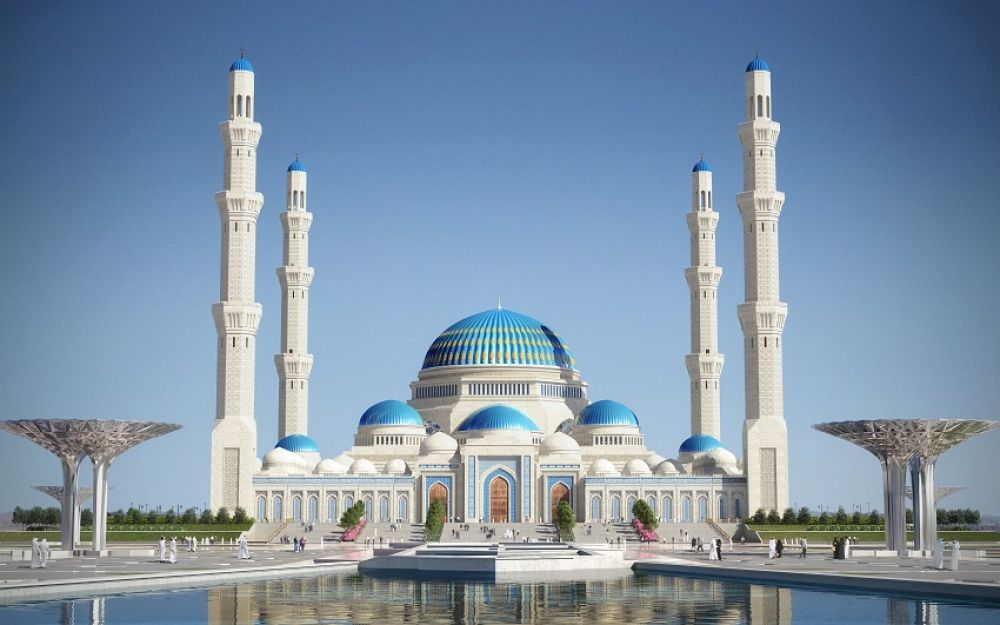

The Nur-Astana Mosque, located in the heart of Nur-Sultan, formerly known as Astana, is one of the most significant landmarks in Kazakhstan. The mosque was not only designed as a place of worship but also as a symbol of the country's growing independence and cultural identity. Since its inauguration, Nur-Astana Mosque has attracted visitors and pilgrims from all over the world, keen to explore the Islamic architecture and the cultural significance of this religious edifice.
The construction of the Nur-Astana Mosque commenced in March 2005 and was completed in 2008. The mosque was a gift to the people of Kazakhstan from the Emir of Qatar, Sheikh Hamad bin Khalifa Al-Thani, and is the third-largest mosque in Central Asia. As a relatively new structure, its history is not drawn from ancient times but from the emergence of Kazakhstan as an independent nation and its desire to showcase its progress and modernity.
Boasting a height of 40 meters, the mosque represents the age of the Prophet Muhammad when the revelation of the Quran began, while the minarets stand at 63 meters, indicative of the age when the Prophet passed away. The mosque can accommodate up to 5000 worshippers, with the interior lavishly decorated with Islamic calligraphy and patterns, capturing the essence of traditional Islamic designs blended with modern architectural practices. These features have made Nur-Astana Mosque a focal point for tourists interested in religious architecture and Islamic culture.
In recent years, religious and cultural tourism in Kazakhstan has seen a steady increase. Nur-Astana Mosque plays a pivotal role in this development, drawing in visitors due to its grandeur and religious significance. The latest trend in the region is the focus on sustainable tourism. Local authorities are striving to promote eco-friendly travel options and to ensure that the natural and cultural heritage is preserved for future generations.
Moreover, digital technologies have transformed the way visitors interact with historical sites. Interactive tours and virtual reality experiences are becoming more prevalent, providing tourists with more immersive experiences when visiting sites like the Nur-Astan Mosque.
The Nur-Astana Mosque serves not only as a house of worship but also as a monument that tells the story of Kazakhstan's journey in the 21st century. It reflects the country’s religious sentiments, its architectural aspirations, and its place in the global community. Consequently, the mosque has become an integral part of the cultural and religious tourism circuit of Nur-Sultan.
Visitors of all faiths are welcome to admire the mosque, though it is recommended to dress modestly out of respect for the religious site. Tours of the mosque are available, providing insights into its architecture, design, and the role it plays in the local community. The mosque is a beacon for social gatherings, celebrations, and a center for Islamic learning which further adds to its attractiveness as a tourist destination.